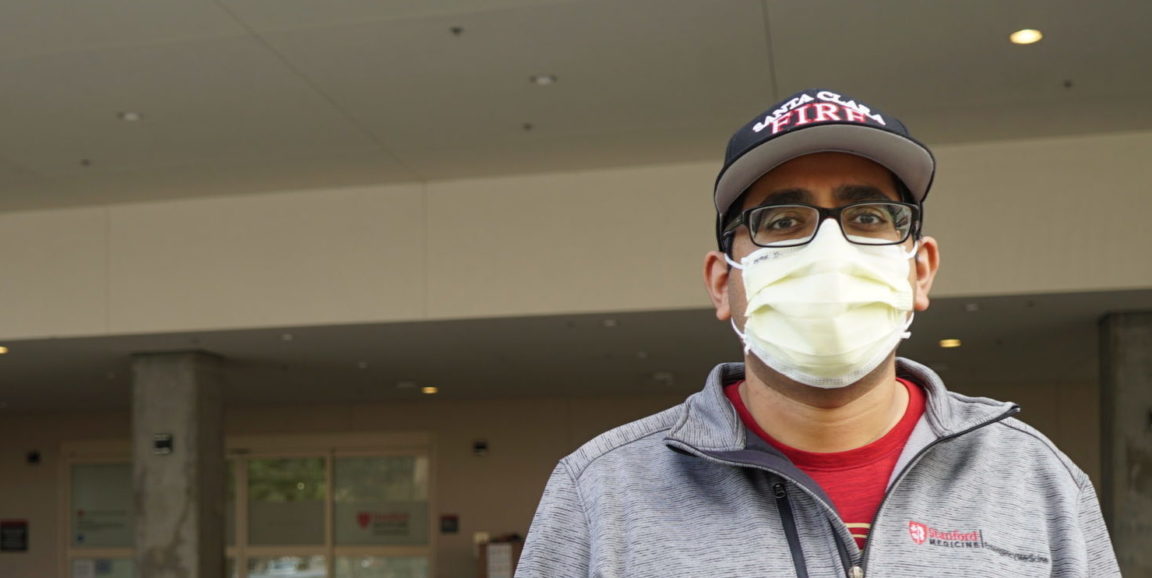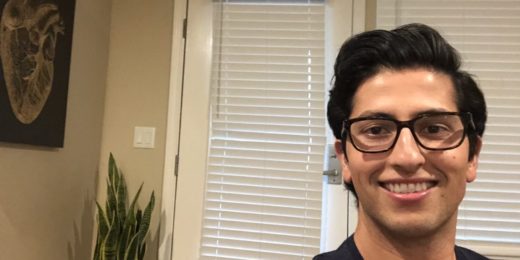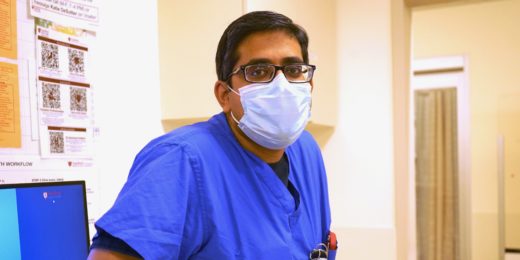On March 10, Peter D'Souza, MD, received a phone call that turned his world upside down. The results of his COVID-19 test had come back positive.
As he reeled with this knowledge, the cough he thought was from a common cold soon progressed into shortness of breath and a fever; within 24 hours, he would feel sick enough to seek treatment from his colleagues at Stanford Hospital.
What followed was an anxious experience monitoring his own symptoms, determining an isolation strategy that worked for his family, and finally, after he recovered, emerging into a new world with a greater understanding of the virus that continues to menace it.
A cough and a swab test
In the first days of March, the World Health Organization had not yet declared a global pandemic. All the same, D'Souza, a clinical associate professor with the Stanford Department of Emergency Medicine, carefully monitored whether he felt symptoms of COVID-19. When he developed a cough, he drove to the hospital. There, he swab-tested himself to avoid putting any colleagues at risk.
The lab ran a full respiratory panel in addition to a COVID test; and within four hours, the panel came back positive for rhinovirus -- an infection associated with the common cold. D'Souza thought he was in the clear: as he told me, "at that time, we thought there was no co-infection on COVID-19, so if you tested positive on rhinovirus, is was assumed you didn't have COVID."
He went to bed less concerned that he had COVID-19. A phone call the next day shattered that sense of relief. He had tested positive.
"It was scary and frustrating," D'Souza told me. "I didn't know what was ahead or what steps to take to protect my family."
New symptoms
He isolated in a guest room at home. That evening, he began to feel worse, developing a fever and shortness of breath. After minimal movement, his heart rate jumped to 150 beats per minute, much higher than the norm of 60 to 100.
D'Souza dug into the medical equipment bag he'd used a short month earlier as a team physician with the San Francisco 49ers during Super Bowl LIV. He pulled out a pulse oximeter to measure oxygen saturation in his blood, a marker of how well lungs are functioning. His saturation reading was normal, which was reassuring.
Still, he felt concerned enough about the new symptoms to return to the hospital.
His colleague Joseph Becker, MD, met him in the ambulance bay and took him to an isolation room. There, D'Souza underwent a second COVID test and received IV fluids and a chest X-ray.
An X-ray preview
As a patient, D'Souza noticed things that had previously escaped his attention as a physician: "It was isolated - I felt lonely. It was midnight; if I was there at noon, I could have called some people to take my mind off of things. I was trying to take things as they came. I didn't know if I'd get admitted for observation or go home."
The X-ray technologist recognized D'Souza, and allowed him to see the X-ray in the machine's preview window. D'Souza looked carefully, but he didn't see anything concerning; "That was actually the moment I felt the most reassured," he told me.
His physician colleagues evaluated the X-ray and his blood work, and determined D'Souza's symptoms had not worsened.
He was released at 4:30 a.m., and drove himself home.
Up next: In Part 2 of this story, D'Souza weathers COVID-19 in isolation at home and returns to work with new insights and resolve.
Photo courtesy of Peter D'Souza






